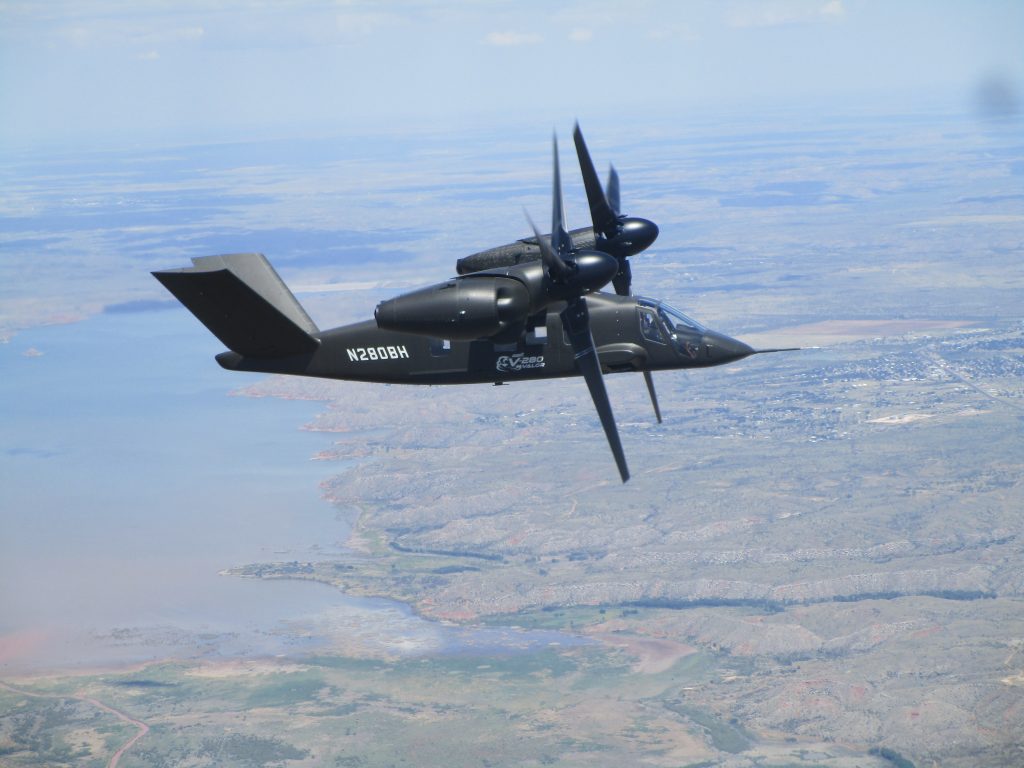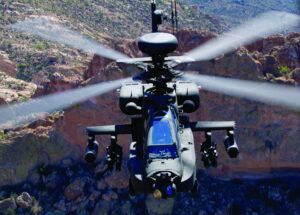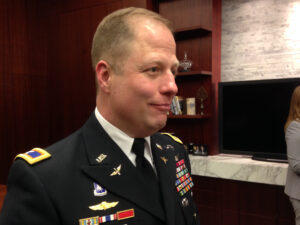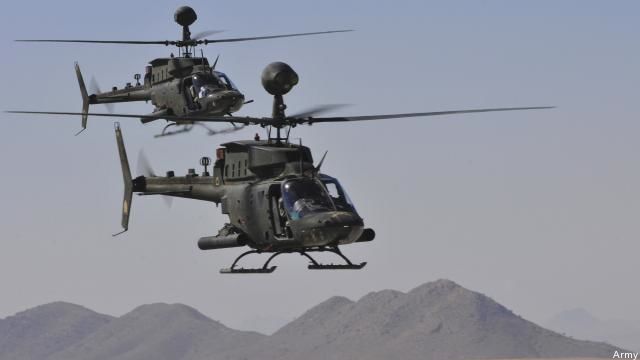Army Wants Revolutionary Scout Aircraft For $30 Million, Same As Apache E
Posted on
The Army wants its revolutionary Future Attack Reconnaissance Aircraft (FARA) to come in at about the same price as its current AH-64E Apache attack helicopter, no more than $30 million per aircraft. That’s an ambitious target for a rotorcraft that, while smaller than the heavily armed and armored Apache gunship, will be much more advanced.
FARA has to be able to work with everything from artillery to hackers to jet fighters to crack open high-tech defenses in a what the military is calling multi-domain warfare. So, among other high-tech features, the Army wants the new scout aircraft to have
- Artificial Intelligence able to fly without human pilots on at least some missions, a concept called “optional manning”;
- a secure communications network to control a whole “ecosystem” of specialized drones that can lead the way into the most dangerous airspace. This is a concept known as Manned-Unmanned Teaming (MUM-T), which the Apache force has experimented with but isn’t really designed for;
- a Modular Open Systems Architecture (MOSA), aka open architecture, that allows quick upgrades of both hardware and software, as long as they meet certain common standards, instead of the often agonizing process required to update existing aircraft;
- a top speed 33 percent faster, 235 miles per hour (205 knots) as opposed to the Apache’s 176 mph, so it can dash through short-lived openings in enemy anti-aircraft defenses;
- but, at the same time, enough fuel efficiency at those high speeds to reach targets 155 miles away (a “combat radius” of 135 nautical miles).
While stripped-down conventional helicopters have hit similar speeds in short bursts, this combination of speed and range requires radical changes in design, blending features of traditional helicopters and turboprop airplanes. Sikorsky is offering a so-called compound helicopter — their S-97 recently exceeded 200 knots in tests (see the video above) — while rival Bell will probably offer a tiltrotor like its V-22 or V-280, which technically aren’t helicopters at all.
So how much for all this awesome?
The official FARA solicitation released at 5pm today sets maximum fly-away cost — that is, the marginal cost to build each aircraft, not counting R&D costs — of $30 million or less. Compare that to the cost to build a new AH-64E, the latest Apache model, which has dropped from $32.7 million in 2017 to $28.6 million in 2019, according to Pentagon comptroller reports. (Most AH-64Es, however, are not new aircraft but old AH-64Ds refurbished and upgraded, which is cheaper).
That’s just the cost to buy a new aircraft, however — which is usually smaller in the long run than the cost to maintain, repair, and refuel it over decades in service. The Army’s target for FARA is Cost Per Flight Hour (CPFH) of less than $4,200. That’s actually less than the Apache’s CPFH of between $6,000 and $7,000. That said, since operating costs like fuel depend heavily on size weight, and the FARA will be smaller and lighter, so this reduction isn’t implausible.
“We have some really, I would say, healthy and challenging affordability goals both in procurement cost, (i.e.) flyaway cost, and with sustainment cost,” Brig. Gen. Wally Rugen told reporters this afternoon. “We’re excited to see them beat those goals.”

Bell V-280 Valor tiltrotor in level flight with rotors facing forward. The V-280 is widely considered the leading candidate for the Future Vertical Lift assault aircraft and a contender for the scout version.
Fast Development, Fast Flight
Brig. Gen. Rugen is an aviator with combat experience in both Afghanistan and Iraq who know heads the Army’s Future Vertical Lift Cross Functional Team (FVL CFT). The service created eight CFTs last fall to pull together combat vets, scientists and engineers, and acquisition experts from across the vast, disjointed Army bureaucracy to get key technologies fielded faster.
The head of the newly created Army Futures Command, Gen. John “Mike” Murray, singled out Rugen’s team for praise in a statement today. Why? Because — helped by having the Army’s Vice-Chief of Staff, fellow aviator Gen. James McConville, as its official mentor and top-level patron — the FVL CFT has moved with particularly striking speed.
Just this March, Rugen and McConville told reporters that the Army urgently needs a new scout helicopter to replace its Vietnam-vintage OH-58 Kiowas — something the Army had already tried and failed to do so many times before that the Kiowas were all retired without a replacement. In June, the Army officially released a draft solicitation that tentatively called for two competing prototypes to fly in 2023. At 5:00 pm Eastern today, the Army issued the final solicitation.
The development schedule and performance requirements are largely unchanged from the draft, Rugen told reporters this afternoon. But what the new document does fill in is the projected value of the various contracts:
- No later than June 2019, the Army expects to award four to six initial design contracts for approximately $15 million each. (That means the total cost to the Army would be $60-$90 million). $8.5 million would be for fiscal year 2019, the $6.5 million remainder in FY20. Dan Bailey, who heads the FVL program for the Army, told reporters today that he has more than six companies or teams of companies seriously interested, so there will be plenty of candidates.
- Nine months later — so no later than March 2020 — the Army expects to select two vendors to do a final design and then build competing prototypes. (Bell and Sikorsky are the overwhelming favorites right now, but an upset isn’t impossible). The two finalists would get approximately $735 million each — not quite $1.5 billion total — over fiscal years 2020-2023. (Funding actually peaks in 2022).
- November 2022 is the target date for the prototypes to first take flight.
- 2023 is the year for flight testing. The companies and the government will jointly spend about nine months doing safety tests and establishing the flight envelope, after which comes about two or three months of government-only flight tests.
- 2024 is the year the Army will decide whether or not to buy one of the prototype designs in bulk, with fielding to combat units to follow rapidly.
Room To Innovate
While the Army’s giving industry a tight schedule, it’s deliberately giving companies a lot of leeway on what kind of performance to deliver. Speed, range, agility, survivability, and cost are all important, Brig. Gen. Rugen said, but no design can be the best at everything at once, so it’s up to each competitor to make trade-offs and find the best balance. “This early in the process, we really didn’t identify much that wasn’t tradable,” Rugen said.
On paper, the specs remain much the same as in the draft solicitation from this summer. The FARA needs a cruising speed of at least 180 knots (207 mph), with brief sprints, or dash speed, up to 205 knots (235 mph). It can have a maximum width of no more than 40 feet — counting rotor blades, fuselage, and (for tiltrotor designs) the wings — and a maximum length of 46.5 feet to allow the aircraft to hide from enemy radar by flying down city streets.
But most of these specs are minimums, Bailey emphasized: “We expect everything to come in well above that.”
So what performance levels does the Army really want? “I hesitate to get really nailed down on this, because we really want to see industry innovation,” Rugen told reporters. “One of our biggest goals is to come at this without chiseling these requirements in granite and then making some early choices that end up being misinformed or maybe foolish” — something the service has had painful experiences with on past canceled programs. With this ugly history to overcome, and threats from Russia and China on the rise, all eyes will be on the Army to see if they can get it right at last.
Subscribe to our newsletter
Promotions, new products and sales. Directly to your inbox.




